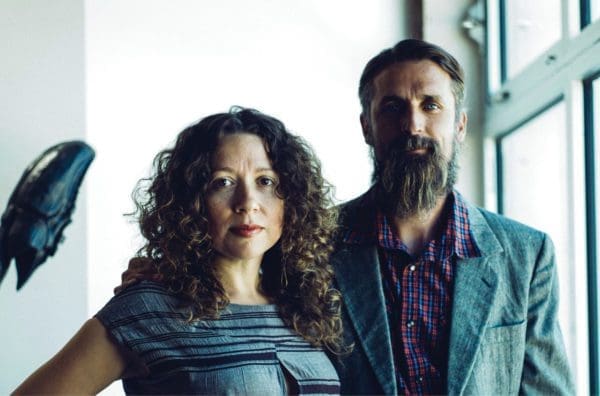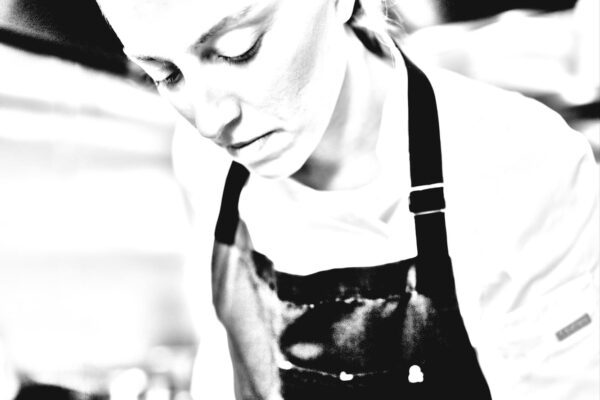Translating the Third Dimension

The Lost Perspective of Art
Words by Jessica Devenyns Photos by Eric Morales
On the flat blacktop of a commercial complex, toy soldiers melt under the sunshine, and a muslin-wrapped figure soars skyward only to be bent in half by the weight of her majesty. Across the cement-covered stage, a small door beckons you to exit the garden and dive deeper into the multi-dimensional world of sculpture.
Sculpture, it turns out, is not the leaden, thoughtful creations of Bernini and Michelangelo that explored the dimensionality of the human body. “Sometimes people think sculpture is some sort of bronze guy, but there’s a lot that can be done in sculpture,” Moya remarks, and Colin continues, “There are some works that are three dimensional that aren’t technically sculpture, like sound installation work or music and dance, which also rely on dimensional space.”
Moya McIntyre, who co-owns Dimension Gallery with her sculptor husband Colin McIntyre, elaborates on the ethos behind this unusual collection, “We’re not the only place showing sculpture; we’re just the only place dedicated to highlighting and exhibiting local sculptors.” In fact, around the country, outside of sculpture gardens, there are few places where three-dimensional artists can exhibit their work with the intention of selling it. Moya explains that this realization was the catalyst behind the couple’s decision to create a space exclusively for those artists’ exhibitions and to teach artists how to navigate the complex and bureaucratic grant-writing process.
Dimension Gallery’s unique body of work is a careful curation brought together by Colin and Moya during their resident artist selection process. Every two years, eight artists are selected to become a part of the Dimension Gallery where they are given a space to showcase their artwork while they are taught how to write grants. “I write one to three grants per artist the first year and then teach them how to write grants for themselves the second year,” explains Moya. These grants, she says, are the key to allowing artists to create art rather than do “bread-and-butter work.” Each grant affords an artist with a lump sum of $4k – $20k a year based on how they qualify.
In conjunction with improving their grant writing skills, Dimension Gallery’s artists spend eight months a year showing their work in 6-week intervals. “They work the gallery during their show so we don’t have staffing costs, and then if they sell any of their work, they make 100 percent of their sales during their solo shows,” adds Moya. Outside of these solo shows, the other four months of the year are populated with shows by guest artists who exhibit alongside the residents. During these events, the gallery splits the commission from sales 50/50. Moya explains that this is just to keep the lights on. “The goal of the gallery is not to make money. It’s to support artists and share as much art and sculpture with Austin as possible.” Eventually, the gallery hopes to offer stipends to its artists so that they can be paid to exhibit their work outside of when they sell it. During these early stages, however, Moya explains that as artists helping artists, “It’s all about supporting the arts.”
The Dimension Gallery
is open for exhibitions, as well as every Saturday, from 12-5pm. The current exhibition opened October 5 and is called Mimicry by blacksmith Colby Brinkman. This exhibition is his second and final show at Dimension Gallery featuring a resumed development of sculptures from his first, Hexapoda, which merged metal, carbon, and fire into creepily familiar and fantastic forms.
Contact:
dimensiongallery.org
@dimensiongallery
info@dimensiongallery.org
512.479.9941
979 Springdale Rd., Ste. 99










